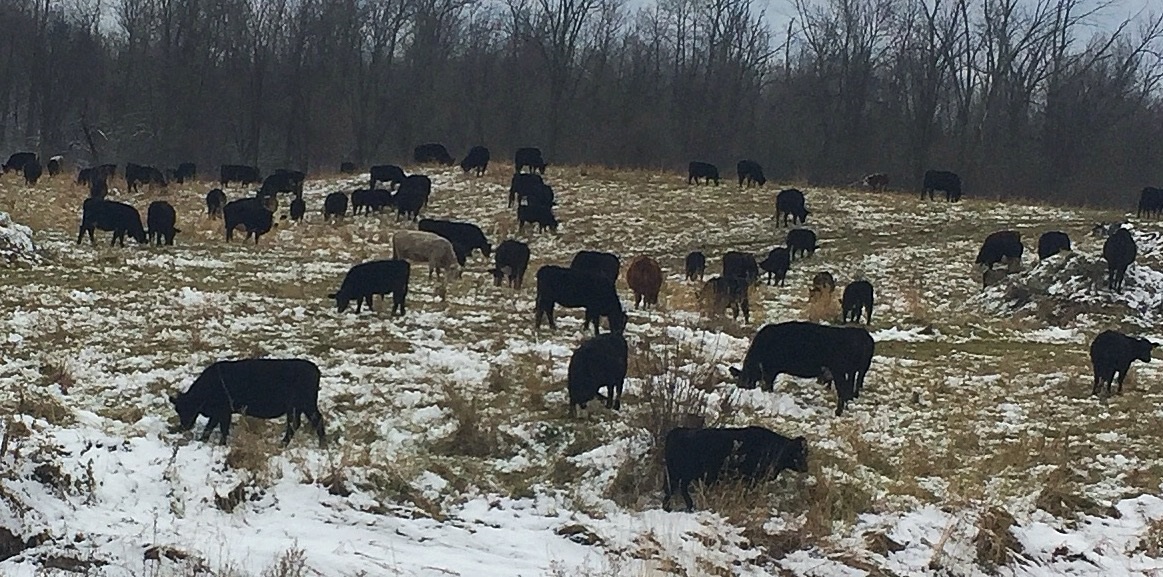Wintering Grass-Fed Beef Cattle in Minnesota
With winter quickly approching a question I often get asked is, “Where do the cows go?” This I know from experience is a very loaded question. Read on to see how our grass-fed beef handle this Minnesota season.
Where do the cows go?
This 5 simple question holds a dozen more questions. For example, “How do they stay warm? Where do they get water? How can they graze if there is snow on the ground?” And my personal favorite “If they are still nursing does their milk freeze?” Yes, I have been asked this! These are all great questions. Some of which I asked when I first married “my farmer”, so let me try and answer these inquiries the best I can.
Beef Biology
Let’s start with a little grade school refresher lesson. Bovines are warm blooded animals, which means that they maintain a body temperature well above their surroundings. Beef cattle keep an average body temperature of 102 degrees. They are most comfortable and productive with an ambient temperature of 40-60 degrees farenheit. I realize in Northern Minnesota, 40 degrees in winter rarely happens and sounds like T-shirt weather (well not quite). It is not uncommon for the temperature in winter to begin with with a negative symbol. Due to our cattle spending their entire lives in the natural elements, from the warm 80 degrees to the 30 below zero, they have adapted an ability to thrive in all conditions. As the months gets colder, the cow’s hair grows longer and thicker. The snow falls and lands on their backs and an air gap is made between the skin and the snow which creates a natural insulation keeping everyone warm and dry.
With the rivers and ponds freezing over in the winter one might wonder how we provide water. Cattle drink 1 gallon of water per 100 pounds of body weight in the summer and 2 gallons per 100 pounds in the winter, that is up to 25 gallons a day. Our farm has a water system that does not freeze and the cows have free access to. However, in the pasture grazing they happily eat snow. Yes, you read that correctly. As long as the snow doesn’t have a frozen crust a mature bovine will consume 30-40 pounds of snow per day. Cows have this wonderful ability to turn snow into the water to sustain themselves.
Feeding the cattle healthy grass into the Minnesota winter.
Now onto winter grazing. This has to be thought out and planned long before the first snowflake. By late summer a portion of grass is left untouched until the end of the growing season. As winter approaches this stockpile of forage is available to the cattle. The rule here is that if I can reach through the snow and easily grab a handful of grass, the cattle will continue to graze . Once the stockpiled pasture is finished we have grass that was baled during the summer at its prime of nutrients. Baled hay is then fed to the cows on the pasture, keeping nutrients and seeds on the fields to nuture next years crop.
Now for my favorite question, “Does the cows milk freeze in the winter?”It all comes back to our grade school lesson of the day. Due to the bovine being warm blooded, their milk stays at a wonderful 101 degrees farenheit. The perfect temperature for their sweet little calves to warm up with. So sorry to disappoint but no frozen milkshakes getting dished out in the winter!


Leave a Reply